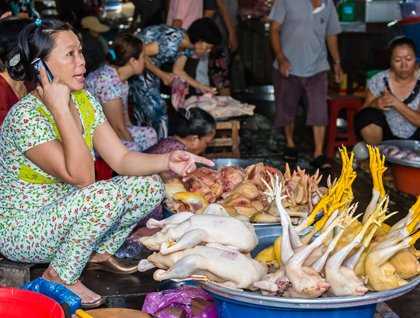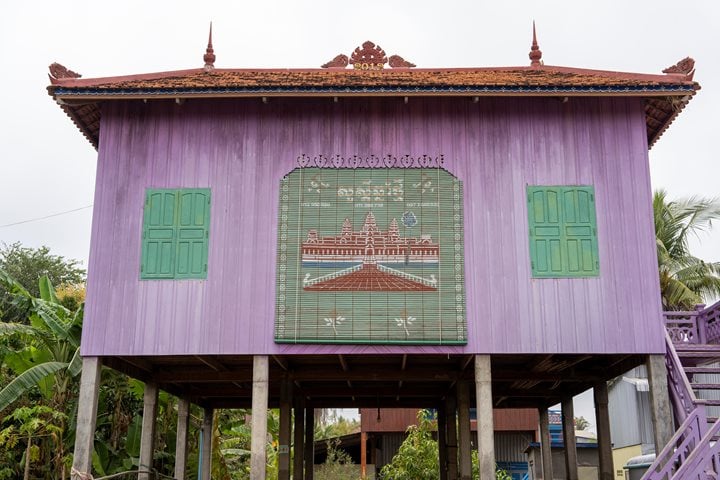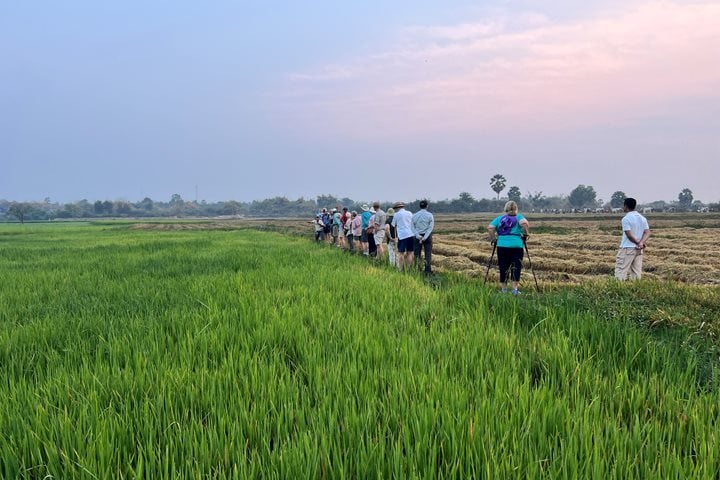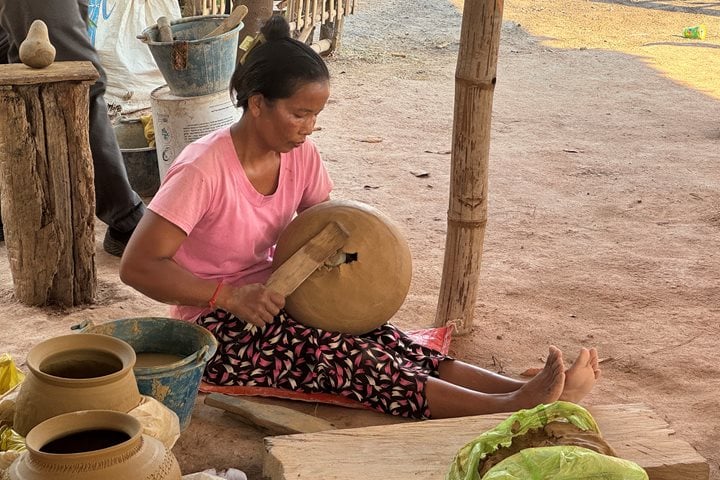World travelers are accustomed to seeing monuments to kings, generals, cultural heroes, military battles and the like, but a towering tin monument to farmed fish? This morning at the Vietnamese fish-farming hub of Chau Doc, we would see just how important the farming of tilapia and the Mekong silver catfish “basa” was to the whole region. And to our supermarket freezers in the USA and Europe!
We departed in local sampans at dawn to beat the heat, and to take advantage of the most activity in the markets of Chao Doc. A flotilla of vending boats was anchored in the middle of the Bassac, or South Mekong Channel, advertising their produce by sticking a sample atop a bamboo pole. Smaller local boats came to buy from them. Being the end of the dry season, coconuts, melons, turnips and other root vegetables were most popular. We were amazed to realize that these people lived in their boats, and spent almost all of their lives on the water!
We continued to a seemingly endless expanse of floating fish farms, where families lived in floating houses that had large nets underneath. We boarded one of these houses, and as soon as our guide threw in some of the fish food it seemed that hundreds of fish splashed to the surface. We were told that each house harvested up to 100,000 fish, which cost $200/day to feed for 10 months. Wow! These fish would then be transferred to a nearby fish factory, where they were filleted and flash-frozen, then flown abroad. And after all is said and done, the family netted about $7-10,000 on a good year. The most amazing thing to all of us was that these were the same fish that we buy as frozen fish filets in our local supermarket as Tilapia or Basa.
The next stop was the market ashore, where we walked through to a temple meeting point and boarded the local transportation: the cyclo. Once we figured out how to position ourselves, it was a fun and relaxing way to see the city and the market. We finally dove into the market headfirst, past the tropical fruits and vegetables to the busy fish section, then to the raw meat section and then on to things that we could not really identify and probably didn’t want to. It was a photographer’s paradise, and there was action everywhere.
We were back at the ship at 0845 with a full and exciting day already behind us, and the upcoming Tan Chau Channel was supposed to be the nicest river cruising of the voyage. The man-made channel connects the Southern Mekong Channel—the Bassac – with the northern channel of the Mekong. It was lined with fish farms, rice factories, brickyards, shipyards, and backed by cornfields and rice paddies. The Vietnamese were in action everywhere, and we would soon leave them behind for the tranquility of the Cambodian Mekong in days to come.









